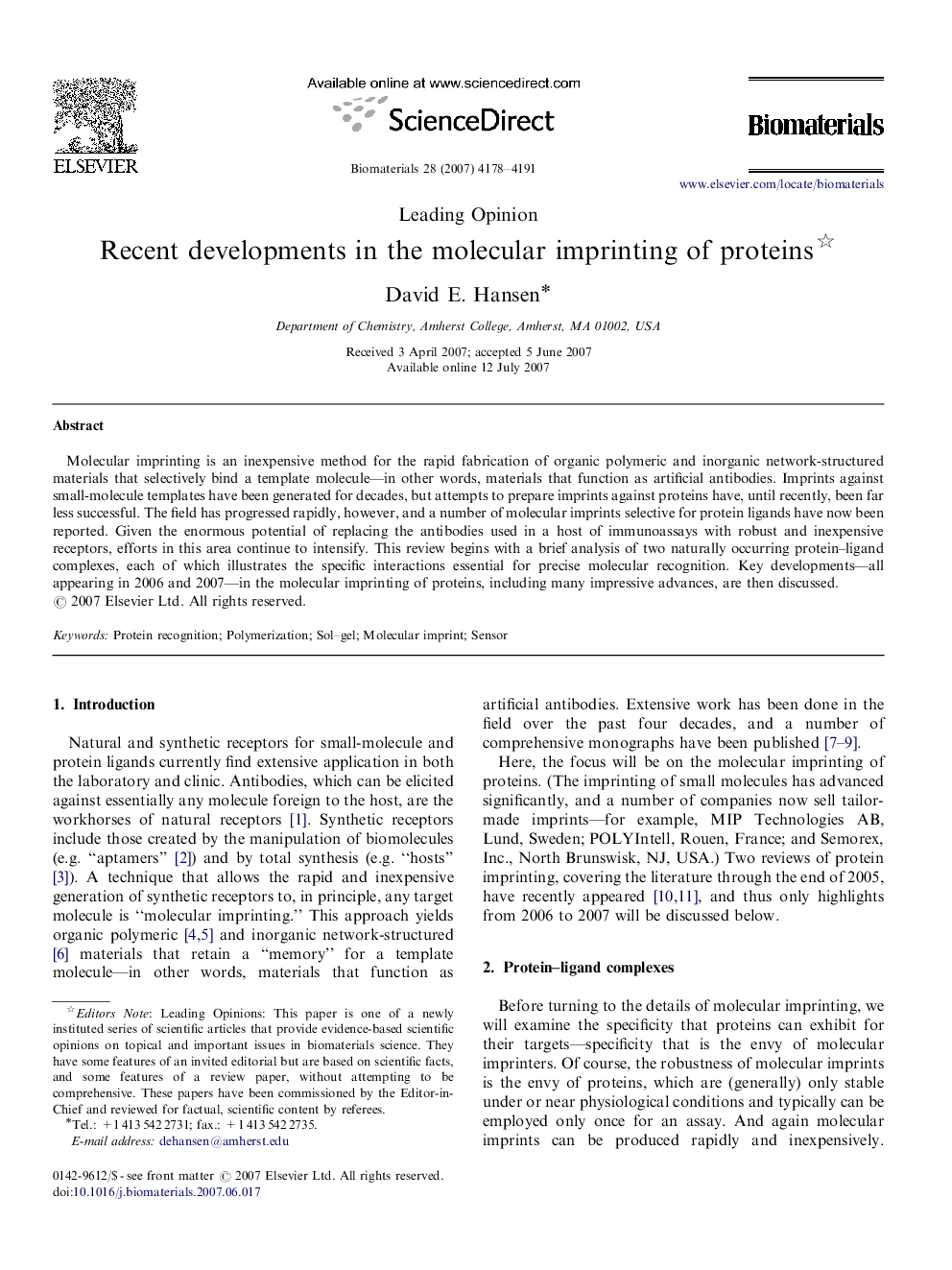| Article ID | Journal | Published Year | Pages | File Type |
|---|---|---|---|---|
| 10874 | Biomaterials | 2007 | 14 Pages |
Molecular imprinting is an inexpensive method for the rapid fabrication of organic polymeric and inorganic network-structured materials that selectively bind a template molecule—in other words, materials that function as artificial antibodies. Imprints against small-molecule templates have been generated for decades, but attempts to prepare imprints against proteins have, until recently, been far less successful. The field has progressed rapidly, however, and a number of molecular imprints selective for protein ligands have now been reported. Given the enormous potential of replacing the antibodies used in a host of immunoassays with robust and inexpensive receptors, efforts in this area continue to intensify. This review begins with a brief analysis of two naturally occurring protein–ligand complexes, each of which illustrates the specific interactions essential for precise molecular recognition. Key developments—all appearing in 2006 and 2007—in the molecular imprinting of proteins, including many impressive advances, are then discussed.
